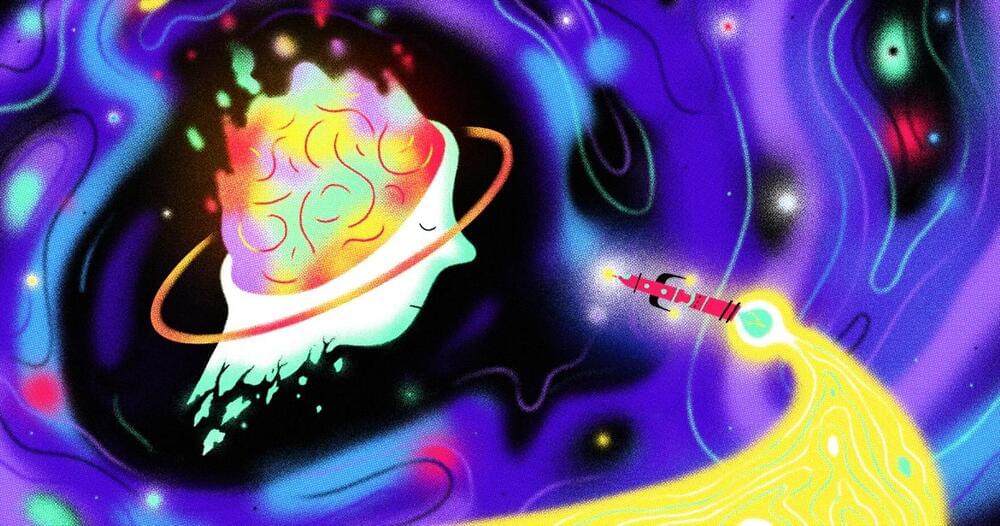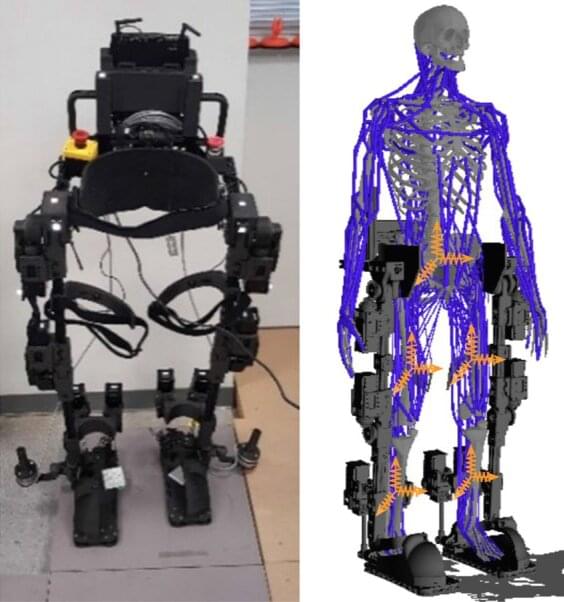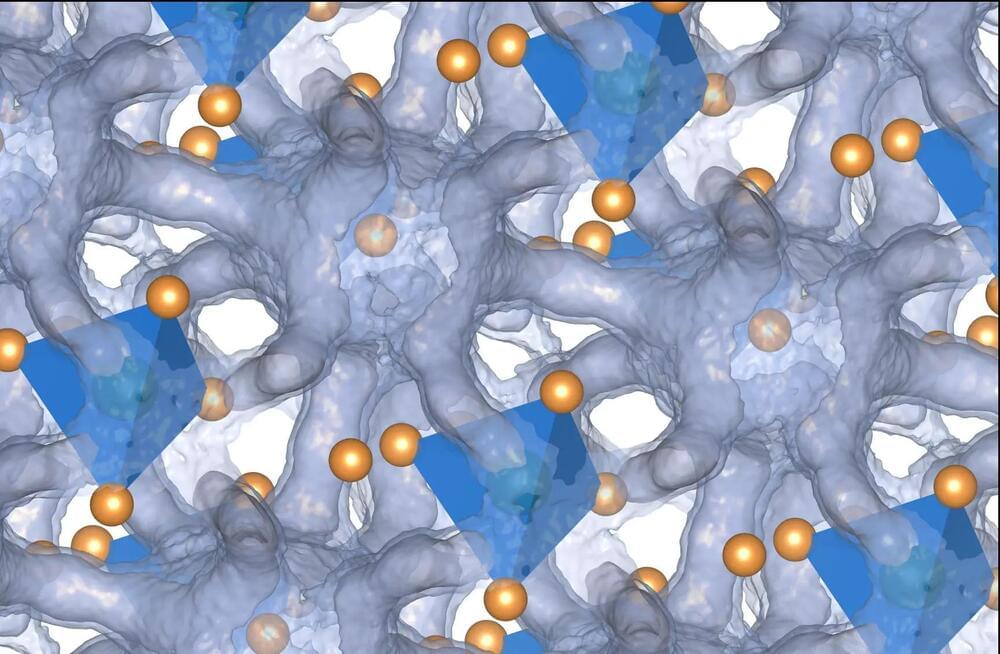The unholy union of SEO spam and AI-generated muck is here. And at the same time, reality, unfortunately, might be going right out the door.



A major limitation in aging research is the lack of reliable biomarkers to assess phenotypic changes with age or monitor response to antiaging interventions. This study investigates the role of intracellular ferrous iron (Fe2+) as a potential biomarker of senescence. Iron is known to accumulate in various tissues with age and recent studies have demonstrated that its level increases dramatically in senescent cells. The current techniques used to measure the accumulation of iron are cumbersome and only measure total iron not specific isotopes such as the redox reactive Fe2+. It is still to be determined whether the damaging form of iron (Fe2+) is specifically elevated in senescent cells. In this study, we assessed the potential use of a newly discovered Fe2+ reactive probe (SiRhoNox-1) for selective labeling of senescent cells in vitro. For this we have generated various senescent cell models and subjected them to SiRhoNox-1 labeling. Our results indicate that SiRhoNox-1 selectivity labels live senescent cells and was more specific and faster than current staining such as SA-βGal or a derived fluorescent probe C12 FDG. Together these findings suggest that SiRhoNox-1 may serve as a convenient tool to detect senescent cells based on their ferrous iron level.
Keywords: SiRhoNox-1; aging; biomarker; iron; senescence.


The brain is regarded as one of the most complex known structures in the universe. It has billions of neurons, trillions of connections, and multiple levels ranging from cellular to molecular and synaptic. But the biggest challenge is that the brain is difficult to access.
“The brain is encased in a thick bone,” said Kinney, “and if you try to access, poke, or prod it, it will get really upset and hemorrhage, and delicate neurons will die.”
Nevertheless, Kinney said progress is being made on various fronts, particularly in the field of recording brain activity, which is good news for those trying to build brain-like computers.

A large proportion of CEOs from a diverse cross-section of Fortune 500 companies believe artificial intelligence might destroy humanity — even as business leaders lean into the gold rush around the tech.
In survey results shared with CNN, 42 percent of CEOs from 119 companies surveyed by Yale University think that AI could, within the next five to ten years, quite literally destroy our species.
While the names of specific CEOs who share that belief were not made public, CNN notes that the consortium surveyed during Yale’s CEO Summit event this week contained a wide array of leaders from companies including Zoom, Coca-Cola and Walmart.


A team of researchers has developed a new method for controlling lower limb exoskeletons using deep reinforcement learning. The method entitled, “Robust walking control of a lower limb rehabilitation exoskeleton coupled with a musculoskeletal model via deep reinforcement learning,” published in the Journal of NeuroEngineering and Rehabilitation, enables more robust and natural walking control for users of lower limb exoskeletons.
While advances in wearable robotics have helped restore mobility for people with lower limb impairments, current control methods for exoskeletons are limited in their ability to provide natural and intuitive movements for users. This can compromise balance and contribute to user fatigue and discomfort. Few studies have focused on the development of robust controllers that can optimize the user’s experience in terms of safety and independence.
Existing exoskeletons for lower limb rehabilitation employ a variety of technologies to help the user maintain balance, including special crutches and sensors, according to co-author Ghaith Androwis, Ph.D., senior research scientist in the Center for Mobility and Rehabilitation Engineering Research at Kessler Foundation and director of the Center’s Rehabilitation Robotics and Research Laboratory. Exoskeletons that operate without such helpers allow more independent walking, but at the cost of added weight and slow walking speed.
A sci fi documentary exploring a timelapse of future space colonization. Travel through 300 years, from 2052 to 2,301 and beyond, and see how modern science fiction becomes reality.
Witness the journey of humans expanding from Earth, to the Moon, to Mars, and beyond.
Turning space into a second home, and becoming neighbours to the stars.
Other topic include: the development of fusion rocket engines, robot missions to Europa, advanced space colony building technology, a Venus floating city, the advanced Moon colony, advanced Mars colonization, asteroid mining stations, the future of quantum computer technology and building in space, simulations of a black hole, the galaxy, and the Big Bang, bio-engineering for space, advanced Asteroid deflection technology, and looking for life in the Universe.
Additional footage from: SpaceX
Created by: Jacob.

Researchers from Duke University and associated partners have uncovered the atomic mechanics that render a group of substances, known as argyrodites, promising prospects for solid-state battery electrolytes and thermoelectric energy converters.
Their findings, made possible through a machine learning.
Machine learning is a subset of artificial intelligence (AI) that deals with the development of algorithms and statistical models that enable computers to learn from data and make predictions or decisions without being explicitly programmed to do so. Machine learning is used to identify patterns in data, classify data into different categories, or make predictions about future events. It can be categorized into three main types of learning: supervised, unsupervised and reinforcement learning.
A new study published in Psychological Science investigated the relationship between loneliness, brain activity, and social interactions. The results suggest that individuals who experience loneliness may process social information differently from those who do not, contributing to feelings of isolation and disconnection.
The study highlights the importance of social connection for psychological well-being. It emphasizes the need for further research in this area to develop effective interventions to help individuals experiencing loneliness improve their social connections and overall quality of life.
Humans are social creatures, and social connection is essential for physical and mental health. Social isolation and loneliness have been linked to various adverse outcomes, including depression, anxiety, cardiovascular disease, and even mortality.